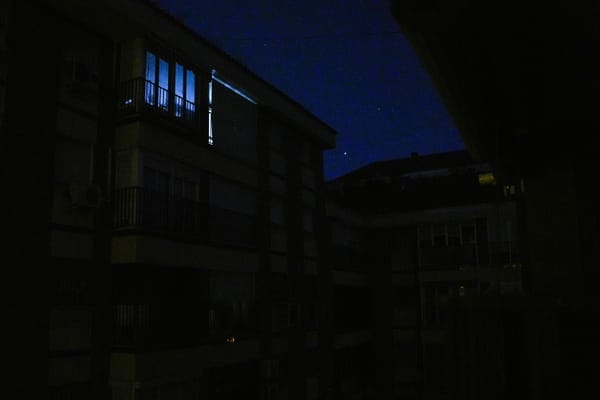On Monday, Spanish grid operators found themselves sprinting against sunset. The entire country had blacked out. Planes paused on the runway for want of air traffic control. Trains lurched to a stop on the tracks or sat in their bays at the station. Within a few hours, the Spanish government declared a national emergency.
The blackouts even touched France and Portugal. Europe is learning another painful lesson about its power sector: If one nation mismanages its grid, its neighbors suffer with it. If these blackouts were caused by Spain’s green-energy policies, as seems likely, these blackouts are a preview of the world to come.
The official explanation for the blackouts is a series of “anomalous oscillations” on long-distance high-voltage lines. This so-called “induced atmospheric variation,” triggered synchronization failures that kicked off power disturbances across the European power system. It's hard to tell exactly what these phrases mean as they sit somewhere between the technical and political realms; there's the question of what happened and then there's the question of who to blame.
But lets put that aside. Simply put, the power grid is like a giant game of tug of war. On one side, there’s demand, and on the other there’s supply. Keeping the lights on involves making sure the rope between supply and demand remains taut. This tautness is called inertia.
Healthy inertia means healthy grid frequency, which in Europe means 50 Hertz (in the United States it’s 60 Hertz). The Portuguese grid operator claims that something along one of its power lines disrupted the even flow of power between generators on its grid, which messed with the frequency, which likely tripped off more wind and solar, which slackened the rope, which probably caused the blackouts.
At least, that’s what we can infer based on what else was happening on the Spanish grid. As reported by Bloomberg’s Javier Blas, at the time of the blackout, the country had a slim percentage of dispatchable power generation in the mix. For those new to power-sector terminology, dispatchable means sources that can switch on to meet demand when you need them. Nuclear, co-generation, and natural gas, all dispatchable resources, made up about 20 percent of the power mix. These resources also have the added benefit of supplying the grid with the steady inertia it needs to maintain proper frequency.
The opposite of dispatchable power is intermittent power, like wind and solar, which Spain has in spades—they made up about 80 percent of the mix just before the blackouts. These sources, especially photovoltaic solar, can’t supply the requisite inertia the grid needs. So when these “atmospheric oscillations” took place, the Spanish grid was already in a precarious spot because its dearth of dispatchable power made it more vulnerable to frequency disturbances.
Dispatchable resources have turbines that slowly switch off when they trip, which means the loss of inertia on the grid is less severe. When renewables trip, it’s like they blink out of existence. Hence the cascading failure on Monday. (To be clear, this is an educated guess. We likely won’t know precisely what happened when a detailed post mortem drops.)
“What we’re seeing stems directly from policy decisions.”
Normally, seeing wind and solar dominate power generation would cause Spanish policymakers to break out the champagne. In fact, last week, when wind and solar made up 100 percent of generation, they nearly did. Like Germany, Spain has been enthusiastic about building out its wind and solar fleets, making way for more renewables on the grid by shuttering its nuclear plants.
Germany’s push to adopt renewables led to a deeper dependence on Russian pipeline gas (and then lignite coal and American LNG after the Ukraine War). Spain’s push has endangered European energy security in a different, more complex way. Thanks to over-reliance on wind and solar, restarting the Spanish grid is going to take far longer than it normally would because it lacks a robust fleet of dispatchable plants to aid in restoring power. What we’re seeing stems directly from policy decisions.
Whatever the cause, this blackout could have a salutary impact on European energy policy if it dissuades countries from pursuing aggressive renewable energy policies that make power less reliable. If the grid slides into mismanagement, the results hurt everyone. As one energy executive put it to me: “The grid is a synchronous system with no graceful failure mode.” It is the industrial commons of modern society.
